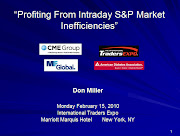It was February 3, 2002.
There was 1:21 left on the clock, the game was tied, the underdog team with the rookie quarterback named "Brady" had the ball on their own 17 year line, and the NFL championship was on the line.
There was 1:21 left on the clock, the game was tied, the underdog team with the rookie quarterback named "Brady" had the ball on their own 17 year line, and the NFL championship was on the line.
Everyone expected Brady to play conservatively and not make a costly error deep in his territory so they could take their chances in overtime.
Even "expert" commentator John Madden told the viewing millions that he should simply play it safe and run out the clock.
Even "expert" commentator John Madden told the viewing millions that he should simply play it safe and run out the clock.
What some may not know, is the advice that Drew Bledsoe (for whom Tom had taken over during the season after a devastating injury) gave Tom on the sidelines just before beginning that drive.
Now while there are conflicting versions of the story -- including a more "colorful" version in terms of vocabulary and another one that suggested Drew was just kidding -- there can be no doubt that Drew was telling Tom to simply stay loose and execute.
Fast forward to June 26, 2010, and I need to heed the same advice.
 For as I get ready to close Q2 and wipe the slate clean once again, the record shows that the last two quarters have been one of my more "interesting" stretches in terms of trying to effectively balance capital conservation and growth. It's a challenge that for obvious reasons comes later in one's trading career for those that have figured out this game.
For as I get ready to close Q2 and wipe the slate clean once again, the record shows that the last two quarters have been one of my more "interesting" stretches in terms of trying to effectively balance capital conservation and growth. It's a challenge that for obvious reasons comes later in one's trading career for those that have figured out this game.For there are many phases in one's trading career, beginning with the huge learning curve and capital draining period that all must go through, yet few get past. Then, for the minority who do indeed weather the initial storm, one enters the fairly consistent phase where it's all about capital growth ... which at times will be rampant.
And then there's the later stage, where capital preservation becomes as important, if not more so, than growth. We'll call that the "Don" phase.
It's a phase that has done in many successful traders, including -- as I mentioned the other day -- possibly even Jesse Livermore, who was rumored to have lost it all after having been the focal point for what is considered one of the greatest trading books ever published, "Reminiscences of a Stock Operator".
btw, I completely disagree on his comment about not focusing on the small gains, yet this was printed well before market liquidity and full electronic access was as it is today ... but that's a topic for another time.
Those who have followed my journey well before this blog was introduced -- going back to the late 1990s -- can likely see such progression in my writings over the years as I first spoke out very publicly about the huge initial learning and capital draining periods that I'd experienced (in part to again try to offset the ridiculous hype and scams prevalent at that time), to focusing on the simple methods that allow for capital growth (TradingMarkets days) that I still use to this day, to periods of personal parabolic equity growth, to the current phase of needing to balance preservation and growth.
And while I recognize many onlookers -- perhaps the majority of them -- are working through one of the first two phases, well ... I'm simply at where I'm at.
They say you learn something every year in this business, and this year has taught me that while you'll face "different" challenges later in your trading career, they're every bit as challenging as those which you first encountered in those early days of frustration and sleepless nights.
And I've found that effectively balancing the two has been one of my toughest challenges ever.
For what began as the self-described "Year of the Iceberg" became at times "Year of the Ice Cube" as I too often alternated using the accelerator and brake as I tried to find the right mix.
Our former NFL quaterback Jellie (still with us btw and showing some solid consistency) refers to it as playing "not to get injured" ... which as he states, is simply the best way to get injured.
For what began as the self-described "Year of the Iceberg" became at times "Year of the Ice Cube" as I too often alternated using the accelerator and brake as I tried to find the right mix.
Our former NFL quaterback Jellie (still with us btw and showing some solid consistency) refers to it as playing "not to get injured" ... which as he states, is simply the best way to get injured.
Yet too many times, I found myself overusing the brakes. In fact, if you were "driving" behind me in a virtual sense this year, you'd likely have seen my tail lights on ... even while I was driving 60 mph.
 Yet just as the end of Q2 for me was about establishing and reinforcing consistency, confidence, and capital after the flash crash (check, check, and check), my goal for Q3 will be to loosen things up a bit.
Yet just as the end of Q2 for me was about establishing and reinforcing consistency, confidence, and capital after the flash crash (check, check, and check), my goal for Q3 will be to loosen things up a bit.It's time to stop playing for overtime and go for the win.
It's time to sling it.


















1 comment:
Great post Don. I for one can see that "slinging it" is relevant to all 3 levels that you spoke of, even beginners where slinging may be just 2 or 3 contracts on a trade, this is a big deal while learning to figure out this game.
It's about risk in one big sense, but also, we realize that to "sling it" as a beginner may sometimes simply be putting on that trade and learning to manage it...just getting consistent at managing trades is critical.
As you've said many times, you have to get in the water to learn to swim.
Heck, that first trade each Monday for a beginner is often "slinging it" just to start the trading week and see if your bias is correct.
Thanks again for your time to put your thoughts out there for all of us looking over your shoulder.
Post a Comment